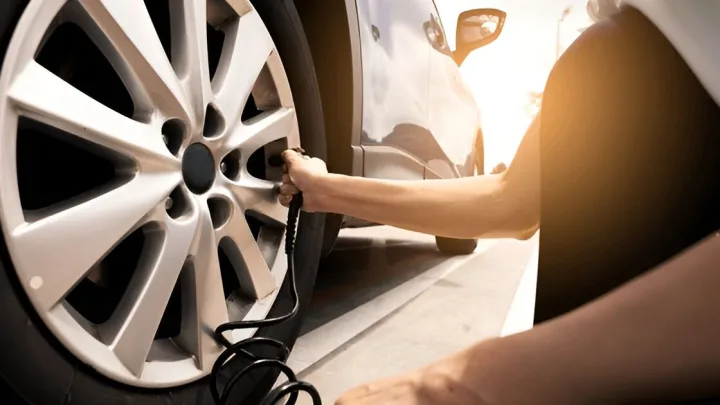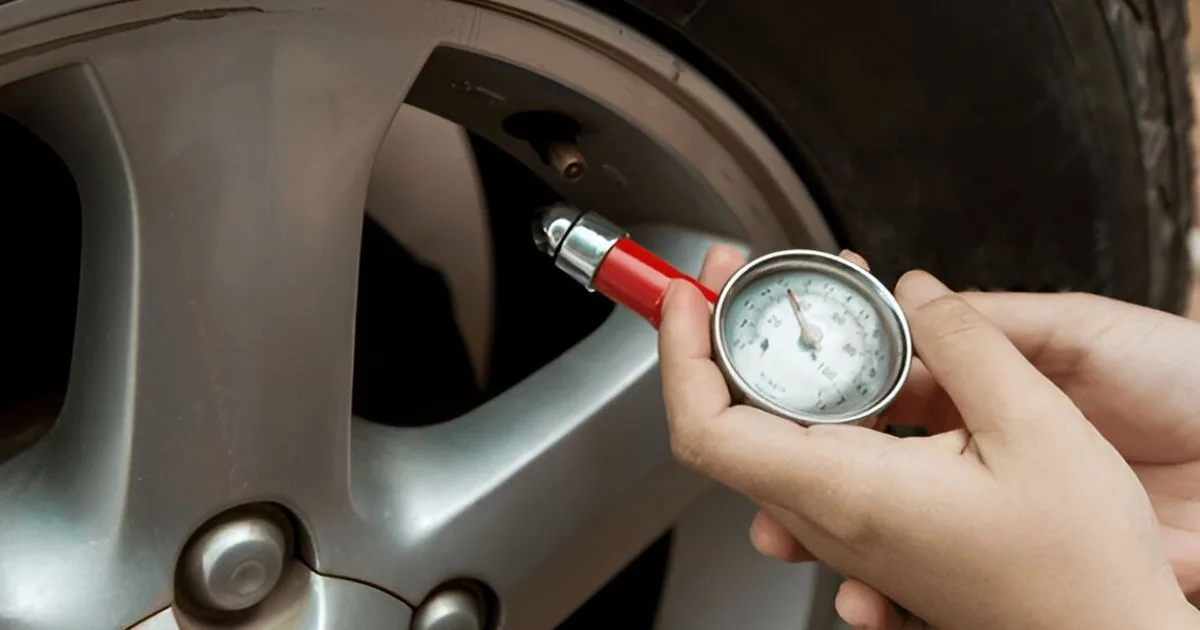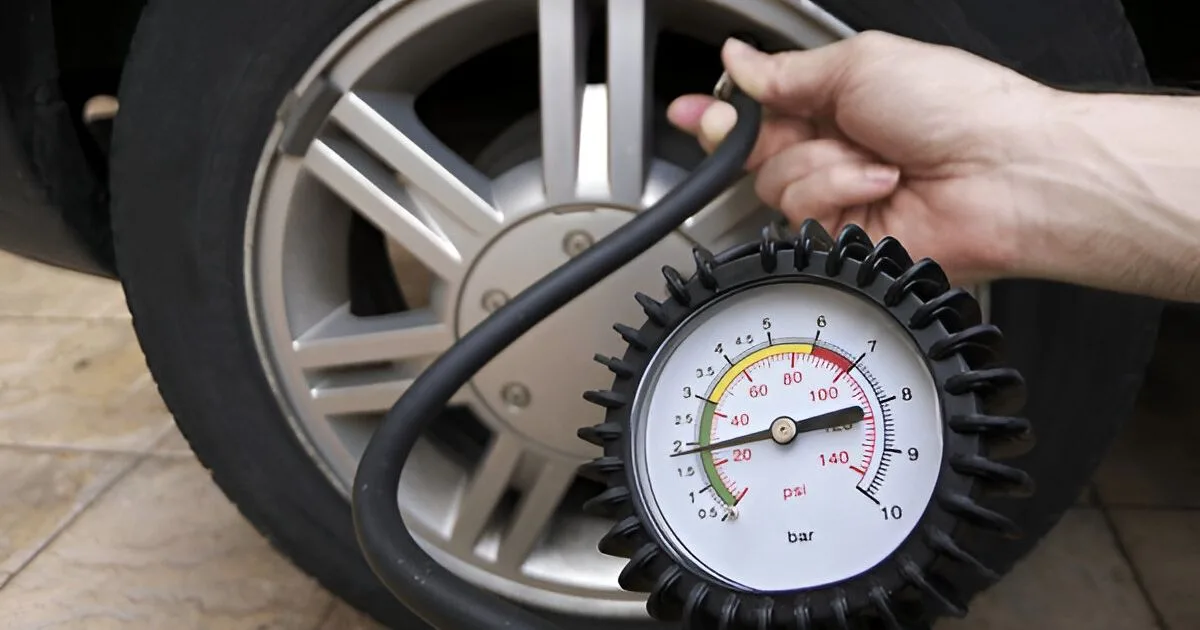
Your car displays 'Tire Pressure Gauge Problem' when the tire pressure monitoring system detects an issue. This could signal a malfunction or incorrect tire pressure.
Driving with the correct tire pressure is critical for safety, fuel efficiency, and vehicle performance.
A warning message like 'Tire Pressure Gauge Problem' on your dashboard shouldn't be ignored.
It often points to a drop in pressure or a fault in the tire pressure monitoring system (TPMS).
This system keeps a vigilant eye on your tires, ensuring they remain at the optimal pressure for your vehicle.
Not only does maintaining proper tire pressure extend the life of your tires, but it also affects handling and braking, which are vital for safe driving.
A quick response to this alert can prevent further complications, ranging from uneven tire wear to a potential blowout.
Understanding the root of the problem is the first step towards a solution, and this guide is designed to demystify the issues surrounding your car's tire pressure warning.
The Importance Of Tire Pressure
Proper tire pressure matters for your car. It affects safety, fuel use, and how the car drives. Your car might show 'Tire Pressure Gauge Problem' when pressure is wrong. Let's explore why keeping the right tire pressure is key.
Safety First
Correct tire pressure keeps you safe on the road. It ensures good grip and stable handling.
Low or high pressure can lead to tire damage or blowouts. Here's what safe tires offer:
- Better control during driving
- Reduced risk of tire failure
- Longer tire life
Check pressure monthly to stay safe.
Fuel Efficiency And Performance
Pressure impacts fuel use and car performance. Tires at the right pressure can save fuel.
They also make your car drive better. See the benefits below:
| Pressure Level | Fuel Efficiency | Performance |
|---|---|---|
| Correct | Maximized | Optimal |
| Low | Decreased | Poor |
| High | Unaffected | Harsh |
Keep tires pumped for best fuel use and smooth rides.
 Tire Pressure Alerts
Tire Pressure Alerts
Common Causes For Tire Pressure Alerts
Seeing a 'Tire Pressure Gauge Problem' alert can be worrying.
Let's explore common causes behind these alerts. Understanding these can help you address the issue quickly and efficiently.
Temperature Fluctuations
Tire pressure changes with the weather. Cold air can make tires deflate.
Hot air does the opposite. This is normal but needs attention.
- In summer, heat increases tire pressure.
- In winter, cold decreases it.
Checking your tires during temperature changes keeps them healthy.
Leaks And Punctures
Leaks or punctures are common but serious issues. They let air escape, causing alerts.
- Inspect tires for nails or sharp objects.
- Look out for cuts or holes.
Fixing punctures early can save your tire and ensure safety.
Decoding Your Dashboard
Modern cars communicate through dashboard alerts. They inform drivers about vehicle health. A common message is 'Tire Pressure Gauge Problem'.
Understanding these alerts keeps you safe on the road. Let's decode your dashboard.
Understanding The Alert Symbol
Your car's tire pressure light looks like an exclamation mark inside a flat tire. It's bold and easy to recognize.
This symbol means one or more tires are below the recommended pressure.
When To Act Immediately
If the tire pressure light flashes, act fast. It signals a rapid or severe tire pressure loss.
Driving on under-inflated tires is dangerous. Stop safely. Check your tires.
Diy Tire Pressure Check
Seeing a 'Tire Pressure Gauge Problem' alert in your car is common. It often means tire pressure is incorrect. You can check this at home.
It's simple. A DIY tire pressure check saves time and keeps you safe. Learn how to do it with this guide.
Tools You Need
- Tire pressure gauge: Essential for accurate measurements.
- Owner's manual: Lists correct tire pressure for your car.
- Air compressor: Optional, for adjusting tire pressure.
- Gloves: Keep hands clean during the check.
Step-by-step Guide
- Find the correct pressure: Check the owner's manual.
- Remove cap from tire valve: Twist cap off carefully.
- Press gauge onto valve: Insert firmly to avoid hissing.
- Read the pressure: Gauge will show tire's PSI.
- Compare with manual: Check if PSI is too high or low.
- Adjust as needed: Use air compressor to fill or release air.
- Replace valve cap: Screw it back on tightly.
Repeat these steps for all tires, including the spare. Consistent tire pressure is key for safe driving. It improves fuel efficiency too.
 Tire Pressure
Tire Pressure
Adjusting Your Tire Pressure
Adjusting your tire pressure is key for a smooth ride. Your car might display a 'Tire Pressure Gauge Problem' if the pressure is wrong. Let's fix that.
Related Post
How to Use a Car Clinometer: Navigate Slopes Safely!
Car Dynamometer Work: Unveil the Power!
How Does a Car Hydrometer Work: Unveiling Secrets
Step-By-Step: Voltmeter Mastery for Car Battery Checks
What Causes a Car Fuel Gauge to Stay Stuck on Full: Insights
What Causes a Car Odometer to Stop Working: Key Reasons
Finding The Right Psi
PSI means Pounds per Square Inch. It's your tire's air measure.
Look inside your car door or manual. You'll see the right PSI.
- Front and back tires can have different PSIs.
- Check in cool weather. Heat changes PSI.
Filling Your Tires
Got the right PSI? Time to fill those tires.
- Remove the cap from your tire's valve.
- Press the air hose onto the valve. You'll hear air.
- Watch the gauge. Stop at your PSI.
- Replace the valve cap.
Repeat for all tires. Check your spare too!
| Tire | Recommended PSI |
|---|---|
| Front Right | 32 |
| Front Left | 32 |
| Back Right | 30 |
| Back Left | 30 |
Always use a good gauge. Station gauges can be off.
Professional Help Vs. Diy
Seeing 'Tire Pressure Gauge Problem' on your dash can be worrisome. You might wonder if you can fix it yourself or need a mechanic. This guide will help you decide.
When To Visit A Mechanic
Certain signs should prompt a visit to a professional. Don't take risks with tire safety.
- Warning light persists after checking tire pressure.
- Multiple alerts come on at once.
- Unsure of how to reset the system.
- Unusual tire wear is visible.
Experts have the right tools to diagnose and fix the issue. They ensure your car stays safe on the road.
Maintaining Tire Health
Regular maintenance helps avoid tire pressure issues. It can be a simple DIY task.
- Check pressure with a reliable gauge monthly.
- Inspect tires for damage or objects.
- Rotate tires to promote even wear.
Keep a maintenance log. This helps track tire care and spot problems early.
| DIY Maintenance | Professional Service |
|---|---|
| Pressure checks | Diagnostic tests |
| Visual inspections | System resets |
| Tire rotations | Repair or replacement |
Preventative Measures
Taking the right steps can avoid tire pressure gauge issues. Let's dive into how regular checks and the right tires can help.
Regular Checks
Check tire pressure monthly. Use a reliable gauge. Ensure tires are cold for accurate readings. Look for any signs of wear or damage.
- Monitor pressure changes with temperature.
- Inspect tires before long trips.
- Refer to the owner's manual for correct pressure levels.
Choosing The Right Tires
Select tires that match your car's requirements. Proper size and type are key. Check the load index and speed rating.
| Tire Type | Benefits |
|---|---|
| All-Season | Good for various conditions |
| Performance | Enhance handling and speed |
| Winter | Provide better grip in snow |
Always buy tires in sets of four. This ensures balanced handling and wear.
Long-term Benefits Of Proper Tire Pressure
Keeping tires properly inflated is crucial for car maintenance. It offers several long-term benefits.
A correct tire pressure gauge helps to maintain this. Let's explore the advantages of maintaining proper tire pressure.
Extended Tire Life
Maintaining proper tire pressure can significantly extend tire life. Tires with correct inflation suffer less wear. This results in fewer replacements over time.
- Even Wear: Balanced pressure leads to even tread wear.
- Reduced Blowouts: Properly inflated tires are less prone to blowouts.
- Saves Money: Fewer tire purchases save money in the long run.
Optimal Driving Experience
Correct tire pressure ensures a smooth, safe driving experience. It enhances vehicle handling and stability.
- Better Handling: A firm grip on the road improves handling.
- Improved Safety: Properly inflated tires reduce the risk of accidents.
- Fuel Efficiency: Optimal pressure boosts fuel economy.
Frequently Asked Questions
What Triggers A Tire Pressure Gauge Alert?
A tire pressure gauge alert is usually triggered by a significant deviation from the vehicle's recommended tire pressure, indicating either under-inflation or over-inflation.
How To Fix Tire Pressure Gauge Issues?
Check tire pressure with a manual gauge and adjust accordingly; if the alert persists, consult a professional to inspect the TPMS sensors for faults.
Can Weather Affect Tire Pressure Readings?
Yes, tire pressure can fluctuate with temperature changes; cold weather often causes a drop in pressure, triggering the gauge alert.
Is Driving Safe With A Tire Pressure Warning?
Driving on incorrect tire pressure is unsafe; it compromises vehicle handling and can lead to tire damage. Address the warning promptly to ensure safety.
Conclusion
Understanding the alert 'Tire Pressure Gauge Problem' is crucial for vehicle safety and maintenance. This guide has aimed to demystify the message, ensuring you can act swiftly to prevent tire-related issues. Regular checks and prompt attention to warnings will keep your journeys safe and your vehicle in top condition. Remember, your car's tires are the foundation of a smooth ride—never overlook their cries for care.
Disclosure
Some links may be affiliate links. That means we may earn a small commission at no extra cost to you.